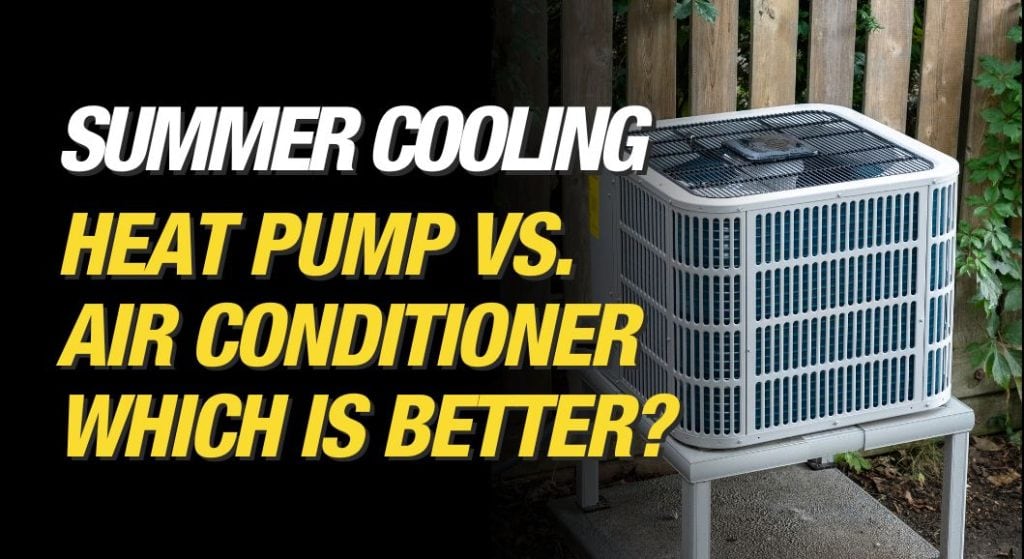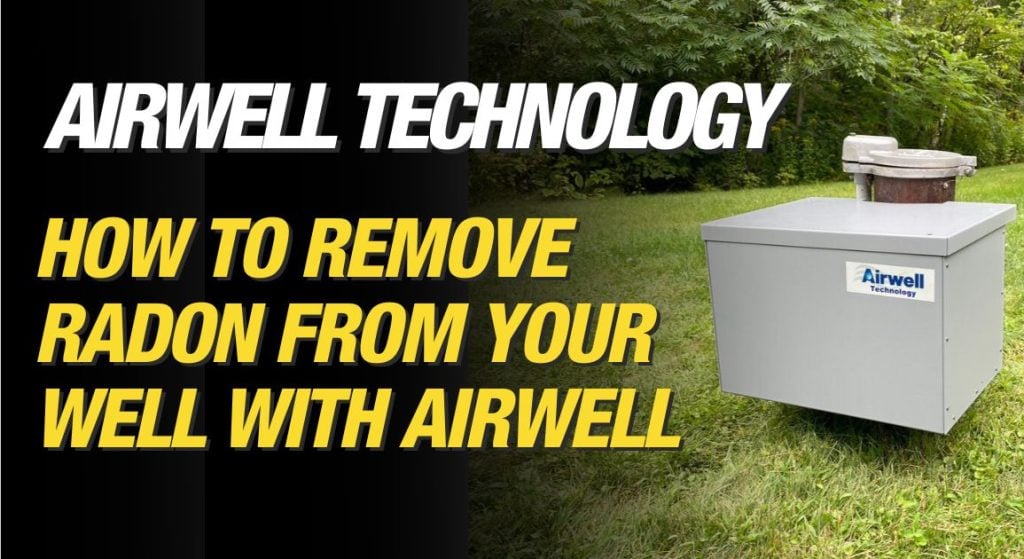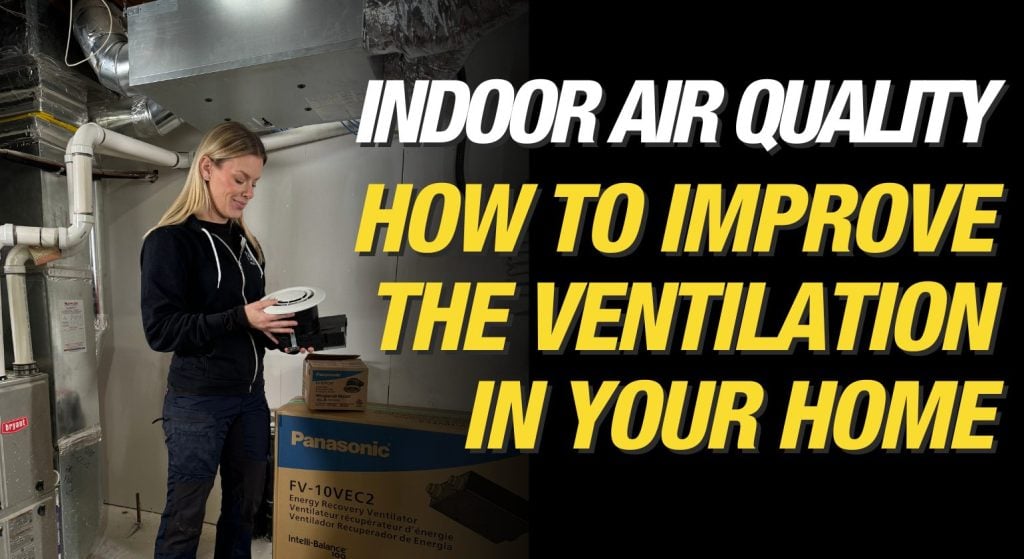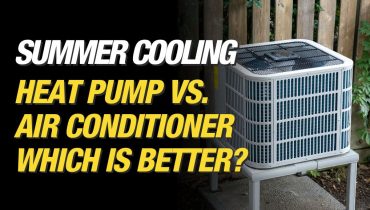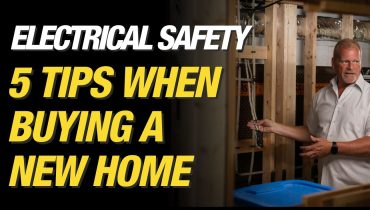Heat Pump vs Conventional AC (Air Conditioner): Which is Better for Cooling? Summer is here and it’s bringing the heat. But I can’t complain because I love the summer weather,...
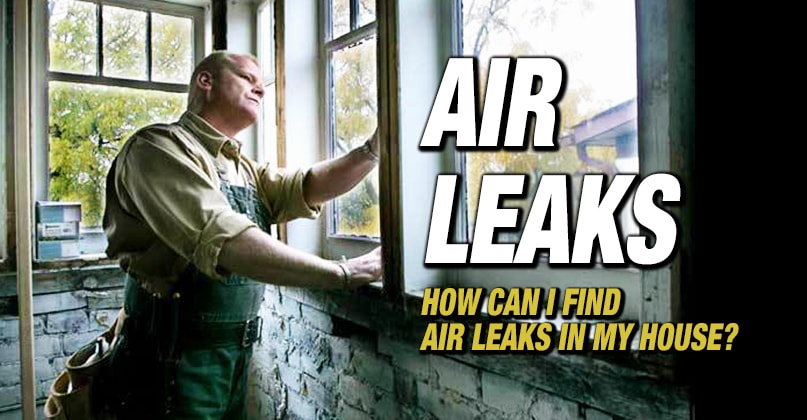
How Can I Find Air Leaks In My House?
By Mike Holmes
Mike’s Advice / Home Safety & Maintenance
Monday, February 1st, 2021 @ 3:41pm
Are you starting to notice drafts and cold spots around the house? To win the fight against the seeping cold, you’ll want to take action quickly.
Solve the problems surrounding drafts and air leaks in your home to make it easier to keep the house warm, and save on your energy bills, too.
So how do you find air leaks in your home? Investigate these common culprits for energy wasting.
#1 Attics & Cold Spaces
Your biggest source of heat loss and air leakage are often the places you can’t see: your attic or crawlspaces.

Any spot in your home where heated sections meet cold zones you find a risk for air leakage.
Take a look at your roof after a snow fall. Are there patches of melted snow or lots of icicles forming around the roofline? That’s a sign that warm air is leaking into the attic from the living space, making your home more difficult to heat. If you see bare spots around exhaust pipes that’s normal, but anywhere else may indicate an attic space that’s bleeding heat.
In the case of your crawlspace, does the floor directly above the space feel cold to the touch? A cold floor isn’t just unpleasant to walk on, it could mean cool air is leaking into the warm part of your home.
The Solution:
You will likely need to add more insulation. Though in the case of rooms over crawlspaces, you may never find the floors are as warm as they are in other parts of the home, but if they’re properly insulated, you don’t need to worry about excess air loss.
RELATED
“Any spot in your home where heated sections meet cold zones is at risk for air leakage.”
#2 Doors & Windows
You may have replaced your windows and doors, thinking it would take care of home air leaks problems, but it doesn’t. Why? Usually, it means whoever installed the new doors and windows didn’t also repair the surrounding framing or left the original uninsulated window frames in place.
Older window frames are rarely insulated properly and typically have gaps between the frame and framing. When the framing has rotted or has uninsulated gaps it will allow cold air to flow freely into the house.
When weather stripping around your doors and windows is broken or missing, you’re allowing unwanted drafts to creep into your home and your dollar bills are flying out the window.

This can severely affect your home’s energy efficiency, so if you feel a gap in your weather stripping, replace it immediately.
Here are some tips on detecting air leaks:
Inspecting Doors for Leaks
- Check doors for cracks.
- Inspect weather stripping for peels and gaps.
- Make sure hinges are tight and doors fit securely in their thresholds.
Inspecting Windows for Leaks
- Give a little shake.If they rattle, frames are not secure, so heat and air conditioning can leak out and rain can seep in.
- Look closely.If you can see the outside from around — not just through — the window, you’ve got gaps.
- Inspect window panes for cracks.
RELATED
The Solution:
In the spring and fall, do a check around the perimeter of your property, taking a close look at all your doors and windows. You’re looking for instances of broken caulking and weatherstripping. If you find some, scrape out the old stuff and replace it with new to prevent drafts getting into the home.
Installing a storm door on your front and back doors can also help keep the cold air out.
#3 Skylights
Installing a skylight means interrupting the roofline, and if it’s not done correctly, it becomes and obvious source for moisture and air leakage problems. If your skylight is a good quality one and has been professionally installed it’s not likely to leak.
Inspecting Your Skylights for Leaks:
Brown stains on walls under a skylight are telltale signs that water is invading, and air is escaping.
The Solution:
For a lot of reasons, I prefer tubular skylights, but the main reason is that they come with a much lower chance of leaking. If you want the light the a traditional skylight provides, consider installing a tubular skylight instead.
#4 Recessed Lighting
When they’re installed on the top floor of a home, holes will need to be cut into the ceiling, which means creating a penetration into the attic space. If done improperly, you’ll start to see heat escape into the attic space, causing all sorts of trouble in your roof and attic. Do not attempt to install pot lights yourself. It can lead to major heat loss.

Photo of Holmes Approved Homes builder Chris Franklin Signature Homes
The Solution:
Hire a licensed electrician to hire the RIGHT kind of recessed lighting throughout your home.
RELATED
Inside your home, inspect around the following problem areas for cracks and gaps that could cause air leaks:
- Electrical outlets
- Switch plates
- Electrical and gas service entrances
- Baseboards
- Fireplace dampers
- Wall- or window-mounted air conditioners.
- Cable TV and phone lines
- Where dryer vents pass through walls
- Vents and fans.
RELATED
How Do You Fix a Drafty House?
- Get an energy audit. It assesses how much energy your home consumes and helps you find solutions to make your home more efficient.
- Caulk and seal air leaks where plumbing, ducting, or electrical wiring comes through walls, floors, ceilings, and soffits over cabinets.
- Get a Blower Door Test, which is performed by Certified Energy Advisors
- Get a home inspection. A licensed home inspector who is an accredited thermographer can bring his thermal imaging camera to help you identify exactly where in the home you’re losing heat, and whether it’s a case of poor or missing insulation, or leaks around pot lighting or electrical boxes.
Finding the source of your cold spots will go a long way to making your home more energy efficient, and keeping your warm all winter long. Trust me, it’s worth the effort.
READ NEXT:
[quform id=”4″ name=”Contact form”]
